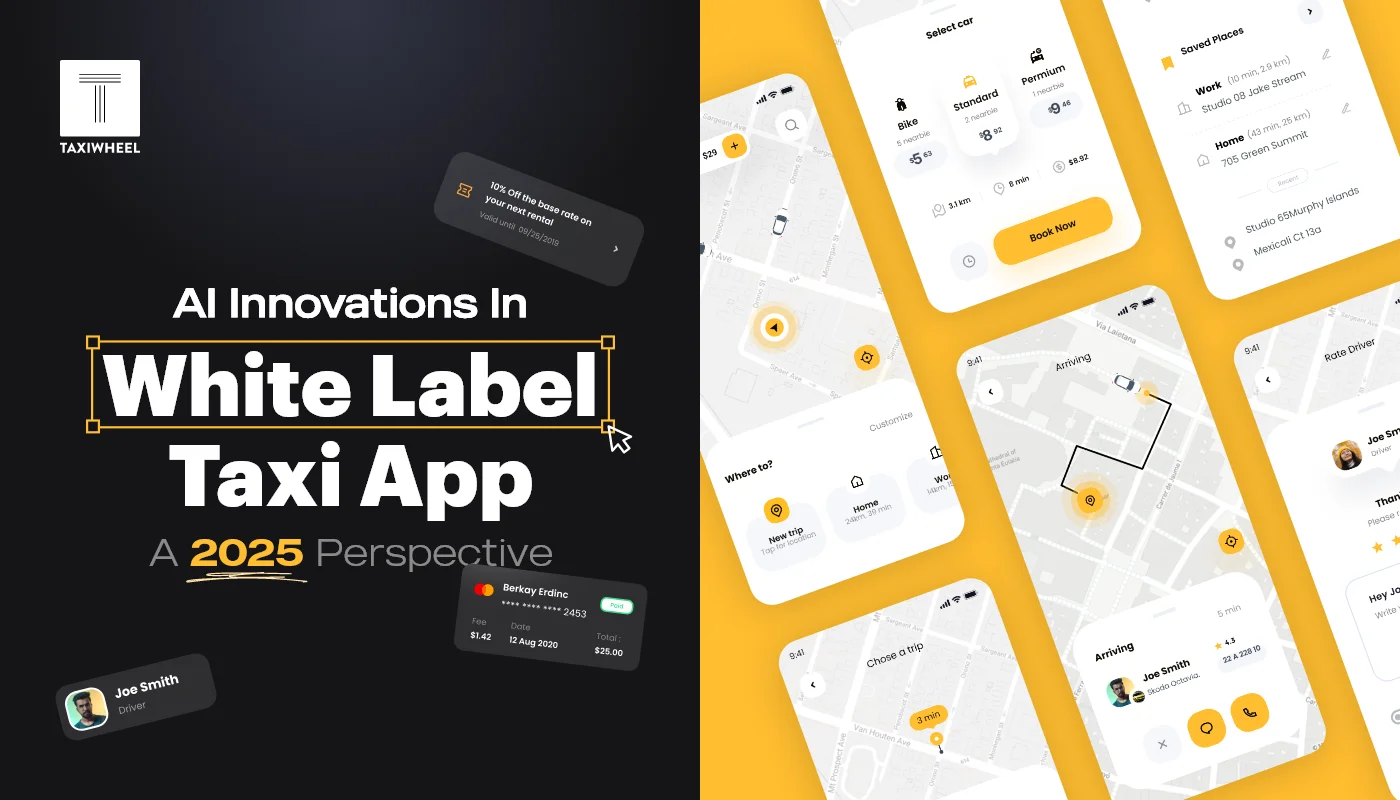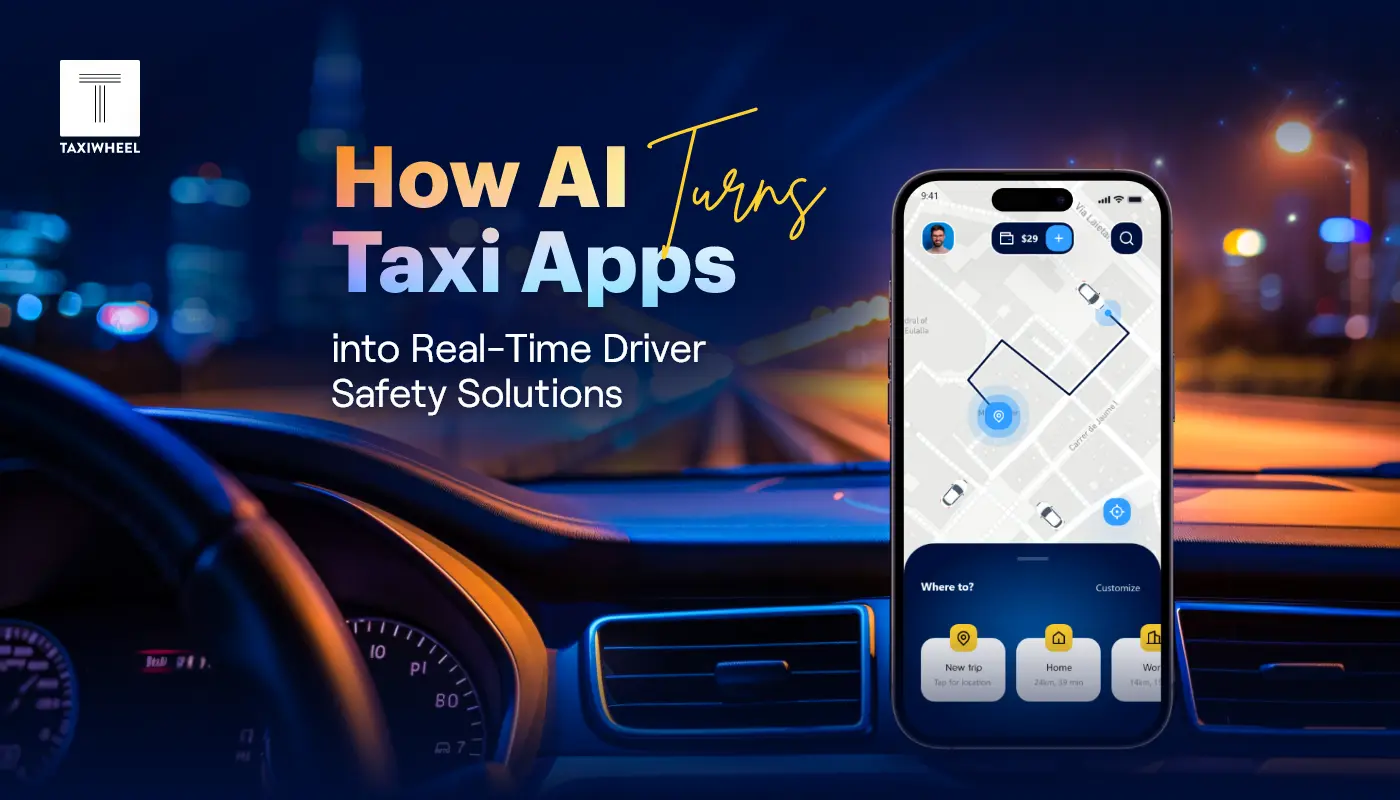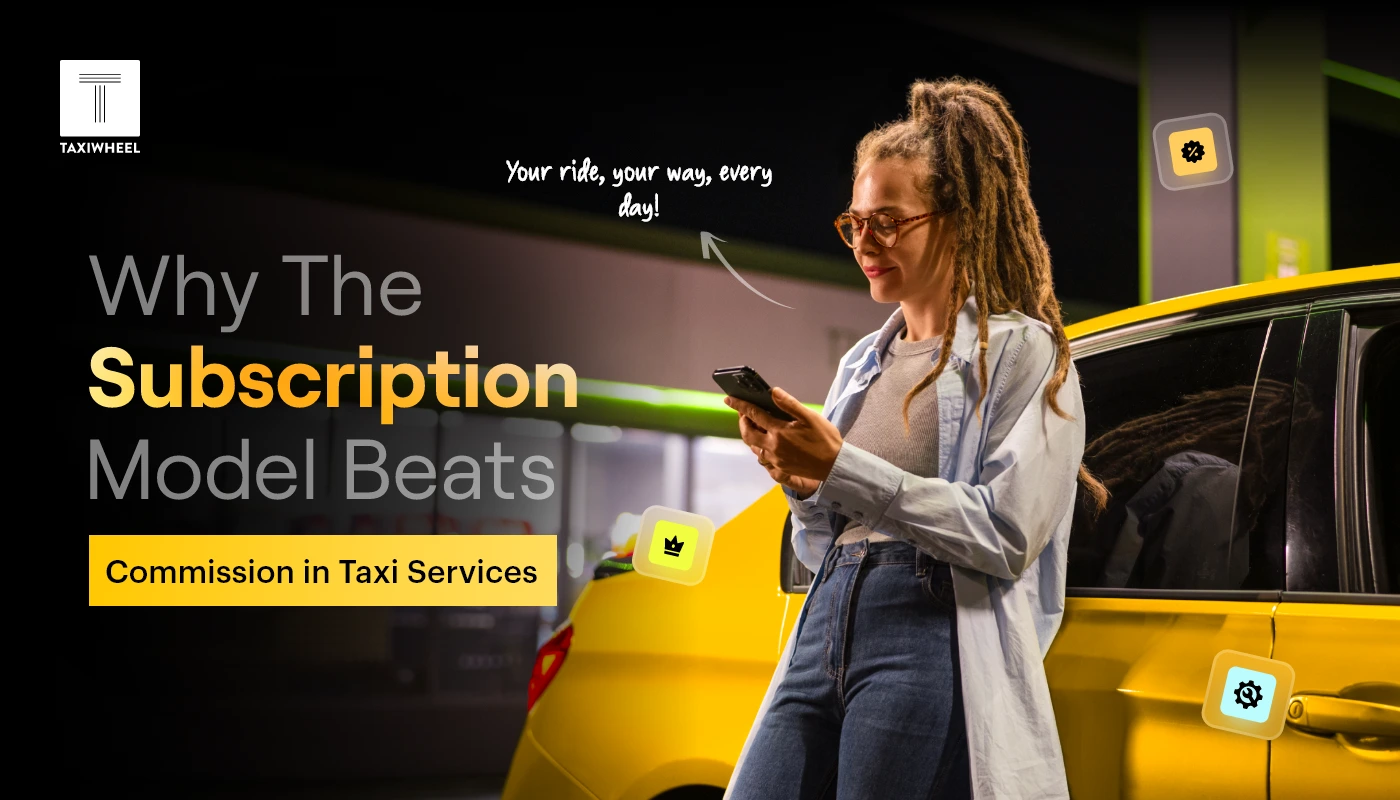
AI-Driven Enhancements in White Label Taxi Apps for 2025
The transportation industry is gaining traction due to digitization, and AI is its heart. On-demand white-label taxi applications are best known for its rapid deployment and personalized features. Now, these features have been using AI to drive smarter operations, enhance customer satisfaction, and win the race in the market.
In 2025, integrating AI into white-label taxi booking solutions is essential for businesses seeking growth and success in the mobility sector. Read here, why so?
1. Predictive Analytics
AI-driven analytics revolutionize demand prediction for white-label taxi apps. By analyzing data like past trends, weather, local events, and socio-economic factors, these apps can accurately predict peak demand times. For businesses looking to scale, this feature cuts costs and ensures reliable service for riders.
Benefits to Business:
- Optimize fleet management for efficient resource utilization.
- Reduce driver idle time to maximize productivity.
- Increase ROI by locating vehicles in high-demand areas.
2. Dynamic Pricing Algorithms
AI-powered dynamic pricing in white-label taxi apps optimizes fares in real-time according to demand and supply. With AI and ML algorithms, businesses can remain competitive in the marketplace and build strong loyalty with their potential customers. This approach replaces static pricing with smarter and more flexible options.
Benefits to Business:
- Enhance earning during high-demand peak hours.
- Provide fair prices during off-peak times for riders.
- Render transparency for both drivers and customers.
3. Fraud Detection and Prevention
White-label taxi mobile apps leverage AI-powered real-time data analysis to identify and prevent fraudulent activities. For businesses, adopting the AI-powered security measures is a strategic move that increases safety and security. By finding out fake bookings and preventing payment fraud, AI systems can improve various security pieces.
Benefits to Business:
- Improve security and overall reliability of the platform.
- Reduce financial risks and losses from fraudulent activities.
- Build and maintain trust with both customers and drivers.
4. AI-Powered Personalization
2025 will witness a revolution in white label taxi apps, driven by AI’s ability to provide highly tailored experiences for individual users. By analyzing customer data, AI can suggest preferred routes, drivers, and car types based on past trips. It offers real-time route optimization considering traffic and weather conditions, and also predicts ride needs to send timely notifications, enhancing user satisfaction.
Benefits to Business:
- Tailored recommendations create a seamless experience.
- AI insights optimize resources and speed up service.
- Personalized offers boost bookings and engagement.
5. Driver Assistance & added Safety Features
Passenger and driver safety are of utmost importance in the taxi sector! Bingo, AI is all-prepared with enhanced safety features in on-demand taxi applications in 2025. AI can track drivers in real-time, helping to prevent accidents caused by speeding or sudden moves. It also spots risky areas and alerts drivers about potential dangers ahead. By analyzing past ride data, AI offers valuable feedback to enhance driver skills. Moreover, AI-based facial recognition and voice authentication ensure secure identity verification for both drivers and passengers.
Benefits to Business:
- Fewer accidents and safer driving practices lead to a better reputation.
- AI-driven verification reduces fraud and builds trust with customers.
- Ongoing feedback helps drivers get better, making rides smoother.
6. Smart Routing and Traffic Management
Smarter experience in ride-hailing industry is all possible due to AI. White label taxi apps are using AI to improve routing efficiency, adjusting in real-time based on traffic, weather, accidents, or road closures. The result? Faster, smoother trips for everyone! Besides, the technology recommends the best times to leave, helping you avoid traffic and save time. For businesses, this means reduced fuel costs, quicker deliveries, and happier customers.
Benefits to Business:
- Faster routes mean less waiting around for passengers.
- Lower fuel costs and better operational efficiency.
- Quicker, more reliable rides boost loyalty.
Future of White Label Taxi Apps
With the evolution of technology, ride-hailing businesses need to stay flexible and embrace the newest innovations to stay ahead. White label taxi apps that incorporate AI features will be in a stronger position to improve customer experiences, optimize operations, and increase profitability. Using AI in areas like personalization, pricing, fleet management, and safety will create a smoother, more efficient ride experience, driving long-term growth in the market.
For B2B companies providing white label taxi solutions, staying ahead of AI trends will be essential to offering a future-proof platform that meets market demands. In the next 2-5 years, integrating your existing ride-hailing software or apps becomes a major need to lead the industry demands.
Experience AI-Driven Development in 2025 With Taxi Wheel
Frequently Asked Question
The cost to develop a taxi booking app depends on the complexity of the app. On an average, the cost varies from $20,000 to $150,000 or more. The cost covers personalization, real-time tracking, payment integration, and backend setup.
Yes, taxi app can be profitable through ride fares, ads, surge pricing, and subscriptions too. It allows business earn a passive income while connecting with drivers of the areas. Improving efficiency, building customer loyalty, and expanding to new areas can also enhance profitability.
To design a taxi app, include essential features like booking, payments, and ride tracking. Create a simple, user-friendly interface for both drivers and passengers. Focus on smooth navigation, fast loading, and mobile responsiveness. Keep the design clear, efficient, and easy to use for a great user experience.
A taxi app allows users to book rides from their mobile phones. Users can mention their destination and the app connects them with the drivers of nearby areas. The app can track the ride, handle payments, and allow feedback. Drivers receive notifications and use GPS to navigate.
Recent Blogs

When you book a ride through a taxi app what’s the first thing you expect? Sure you want the driver to arrive quickly and the app to work smoothly. But above all, you want to feel safe. That’s what keeps people coming back to a service-or leaving it behind for good. For companies investing in […] Read more

For more than a decade, commission-based models have been the backbone of ride-hailing platforms. Companies like Uber and Lyft built their empires by charging drivers a percentage from every trip. It worked in the early years, but the cracks in this system have become harder to ignore. Drivers complain about shrinking margins, passengers face unpredictable […] Read more

The ride-hailing industry is rapidly evolving—and so are the risks. Every time a rider books a trip, or a driver checks a route, valuable data moves through the system. For platform owners, this isn’t just about app performance. It’s about protecting the information that fuels the business. From payment details to real-time locations, taxi app […] Read more